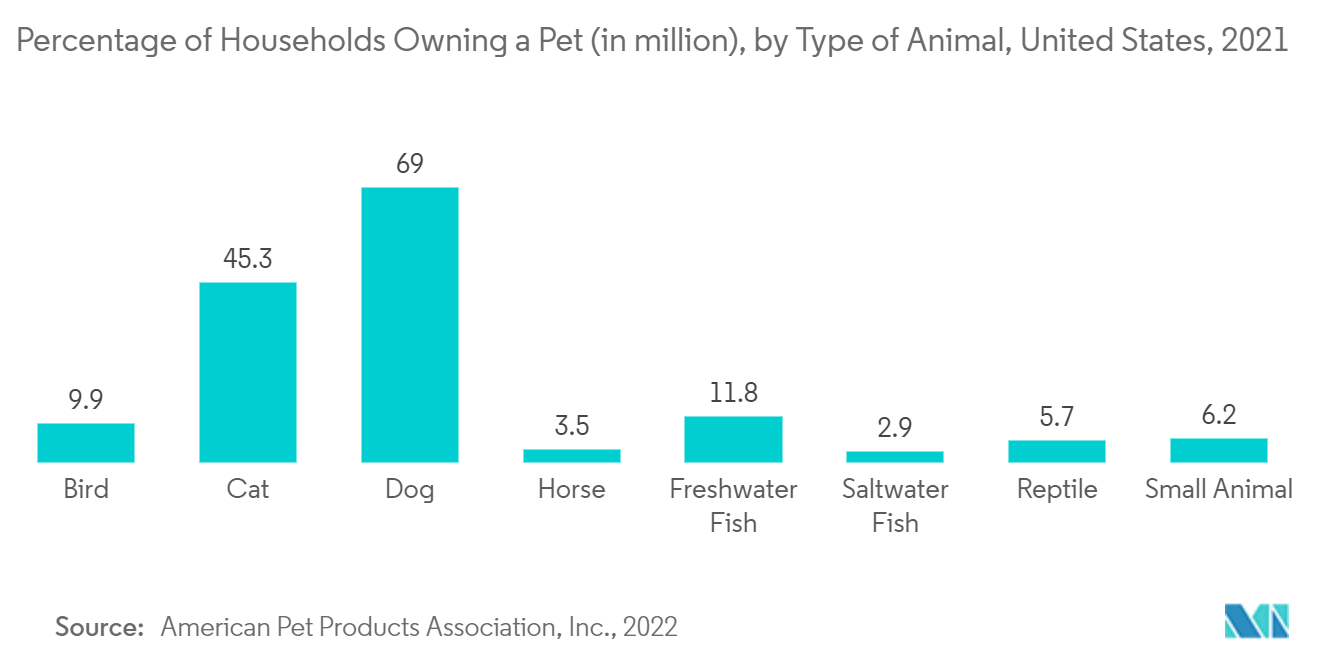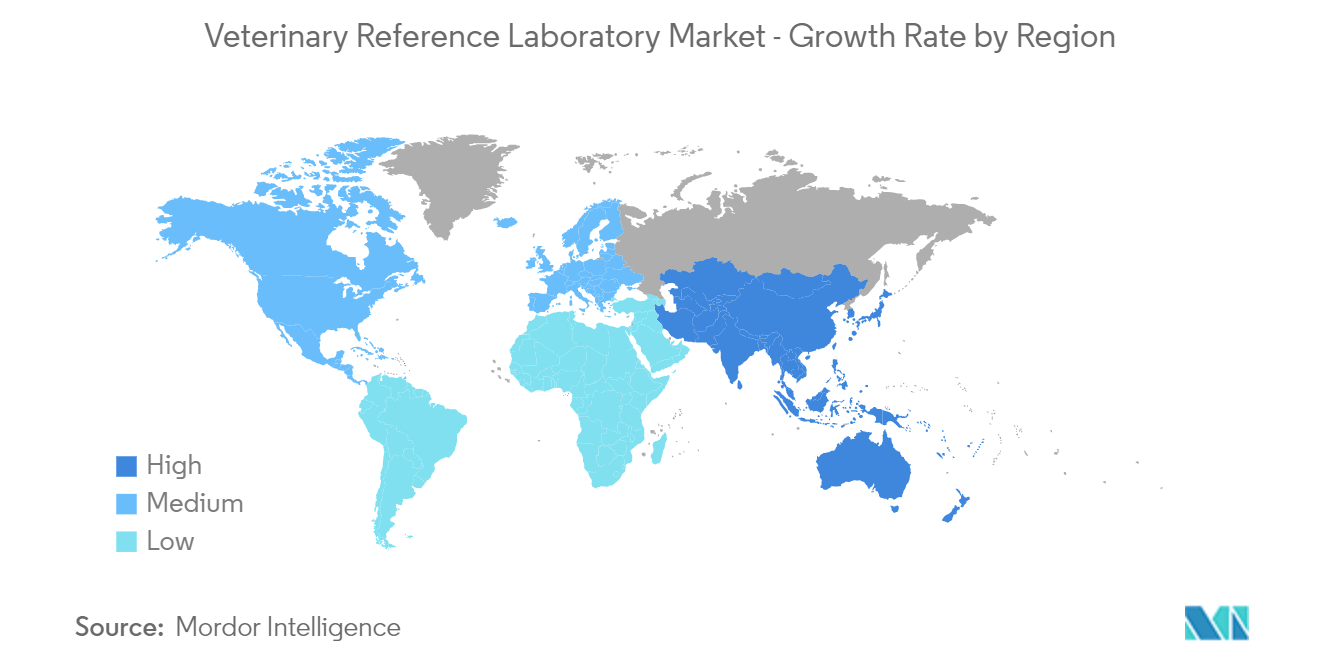Market Trends of Veterinary Reference Laboratory Industry
Companion Animal Segment is Expected to Hold a Significant Market Share Over the Forecast Period
The companion animal segment is expected to hold a major share of the veterinary reference laboratory market due to the high prevalence of chronic and infectious diseases in companion animals, growing pet adoption, and increasing life expectancy, further increasing the risk of diseases. For instance, according to an article published by Frontiers in March 2021, cancer is considered the leading cause of death in dogs, partly because many cases are identified at an advanced stage when clinical signs have developed and the prognosis is poor. Thus, the rising prevalence of cancer in companion animals is expected to increase the usage of veterinary reference laboratories.
According to the data published by Animal Medicines Australia (AMA) in November 2022, Australia spends over USD 33 billion annually to keep pets healthy, nourished, and well-accessorized. Out of the USD 33 billion spending, 14% is spent on veterinarians and 9% on healthcare products. According to the same source, the annual household spending for veterinarian services and healthcare products for dogs was USD 631 and USD 323, respectively, in Australia in 2022. Similarly, the annual household spending for veterinarian services and healthcare products for cats was USD 388 and USD 280, respectively, in Australia in 2022. Thus, the rising pet care expenditure is also expected to enhance the segment's growth.
According to the data published by the European Pet Food Industry: Facts and Figures 2021 report, 10,300,000 dogs and 16,700,000 cats were reported in Germany in 2021. As per the same source, the percentage of German households owning at least one cat was 21%, and one dog was 19% in 2021. This shows that the adoption of cats was higher among the population than dogs.
According to Der Deutsche Heimtiermarkt data, updated in 2022, 47% of the households in Germany had pets in 2021, including 34.7 million dogs, cats, small animals, and ornamental birds. Also, as per the same source, the number of cats adopted was higher in Germany compared to the adoption of dogs. About 16.7 million cats live in 26% of German households, compared to 10.3 million dogs in 21% of households. Thus, the rising pet adoption is also expected to boost segment growth.
Hence, factors such as the rising prevalence of various chronic and infectious diseases in companion animals and the growing pet adoption are expected to boost the segment's growth.

North America is Expected to Have a Significant Market Share Over the Forecast Period
The North American region has held a significant share in the veterinary reference market over the years and is expected to show the same trend over the forecast period due to the large animal population (especially pets) and increasing disease burden, presence of better veterinary care and services, and increasing veterinary healthcare expenditure in the region.
According to the data from the Canadian Animal Health Institute (CAHI) in September 2022, more than half of Canadian households (60%) owned at least one dog or cat in 2022. The data also detailed that the dog population increased to 7.9 million while the cat population increased to 8.5 million in 2022. Thus, with a large population base of animals, the burden of cancer among animals is expected to be higher, which is anticipated to drive growth in the region.
In North America, the United States is expected to hold a significant share of the veterinary oncology market as the country has one of the highest numbers of animals in the region, coupled with high animal health expenditure and a high burden of animal cancer cases. For instance, according to the 2021-2022 American Pet Product Association (APPA) National Pet Owners Survey, about 70% of the US households owned a pet, i.e., about 90.5 million homes, and cats and dogs were the major pets with a total population of 45.3 million and 69 million, respectively. As per the same source, pet owners spent about USD 458 for dogs and USD 201 for cats for surgical vet visits, and for the routine vet, they spent USD 242 and USD 178 for dogs and cats, respectively. This data shows the presence of a large pet population in the country and spending on them, which is usually high compared to other regions.
The developments by key market players are also expected to boost the market's growth. For instance, in December 2021, Neogen Corporation acquired a Washington-based companion animal genetic testing company Genetic Veterinary Sciences Inc.
Hence, factors such as the rising prevalence of various diseases in animals, the growing pet adoption, and the increasing developments by key market players are expected to boost the market's growth in the region.

